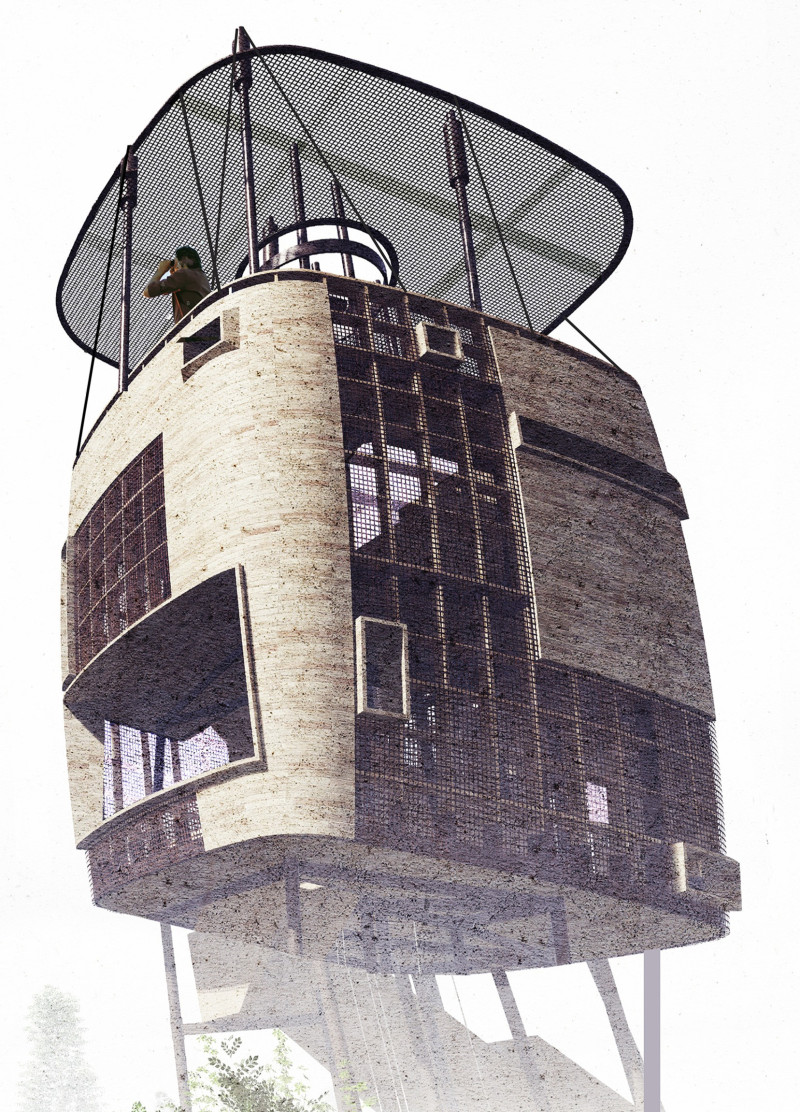5 key facts about this project
The View Catcher project is located in Kemeri National Park and focuses on enhancing the connection between people and nature. It is designed to rise above the landscape and frame different views, allowing users to engage with the natural environment. The main goal is to create visual experiences that range from intimate observations of wildlife to wide-ranging views of the park’s scenery.
Conceptual Framework
The design emphasizes a close relationship between the building and its surroundings. The structure takes inspiration from natural shapes, such as trees and reeds, which helps it blend into the landscape. This approach shows a commitment to preserving the environment. The foundation is auger-bored to protect existing plants and animals, minimizing any negative impact on the local ecosystem.
Viewing Experience
The largest view catcher is positioned on Platform 2, offering visitors a panoramic view of the park's diverse landscapes and wildlife. This positioning allows for an immersive experience that connects users with the park's ecological richness. The tiered platforms create varied viewing opportunities, from quiet moments observing nearby fauna to broader horizons that invite contemplation of distant vistas.
Accessibility and Interaction
A manual winch system is included in the design to improve accessibility, ensuring that visitors with different abilities can experience the upper levels of the observatory. This feature acknowledges the need for inclusivity, allowing all visitors to engage with the space fully and enhancing the overall experience.
Light and Materiality
While specific materials have not been detailed, the structure suggests the use of a lightweight framework that minimizes disturbance to the natural setting. The way light interacts with the building creates an ever-changing atmosphere, inviting users to explore the environment. Each moment spent in The View Catcher becomes a part of the natural experience, encouraging reflection on one’s surroundings.



























